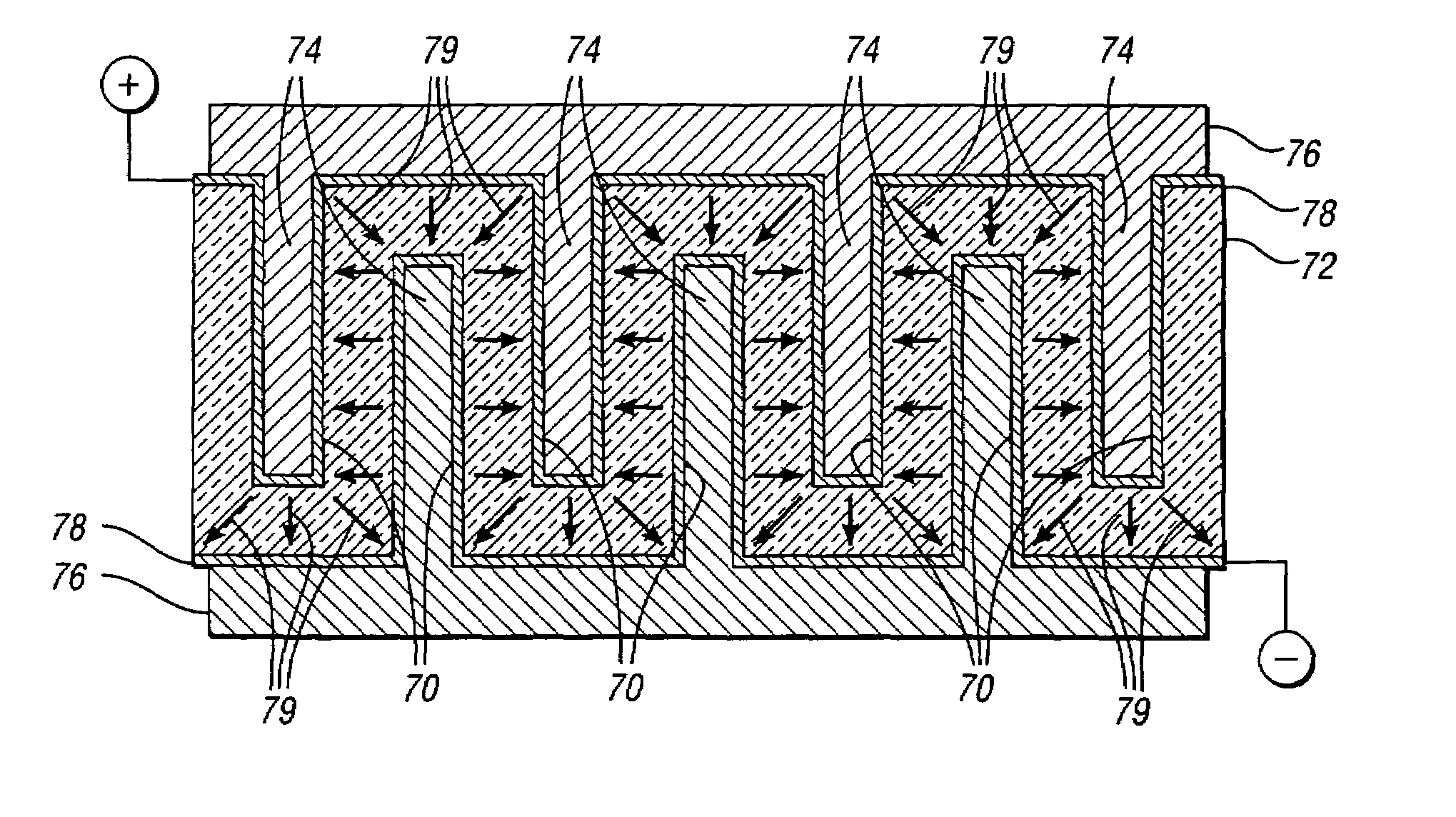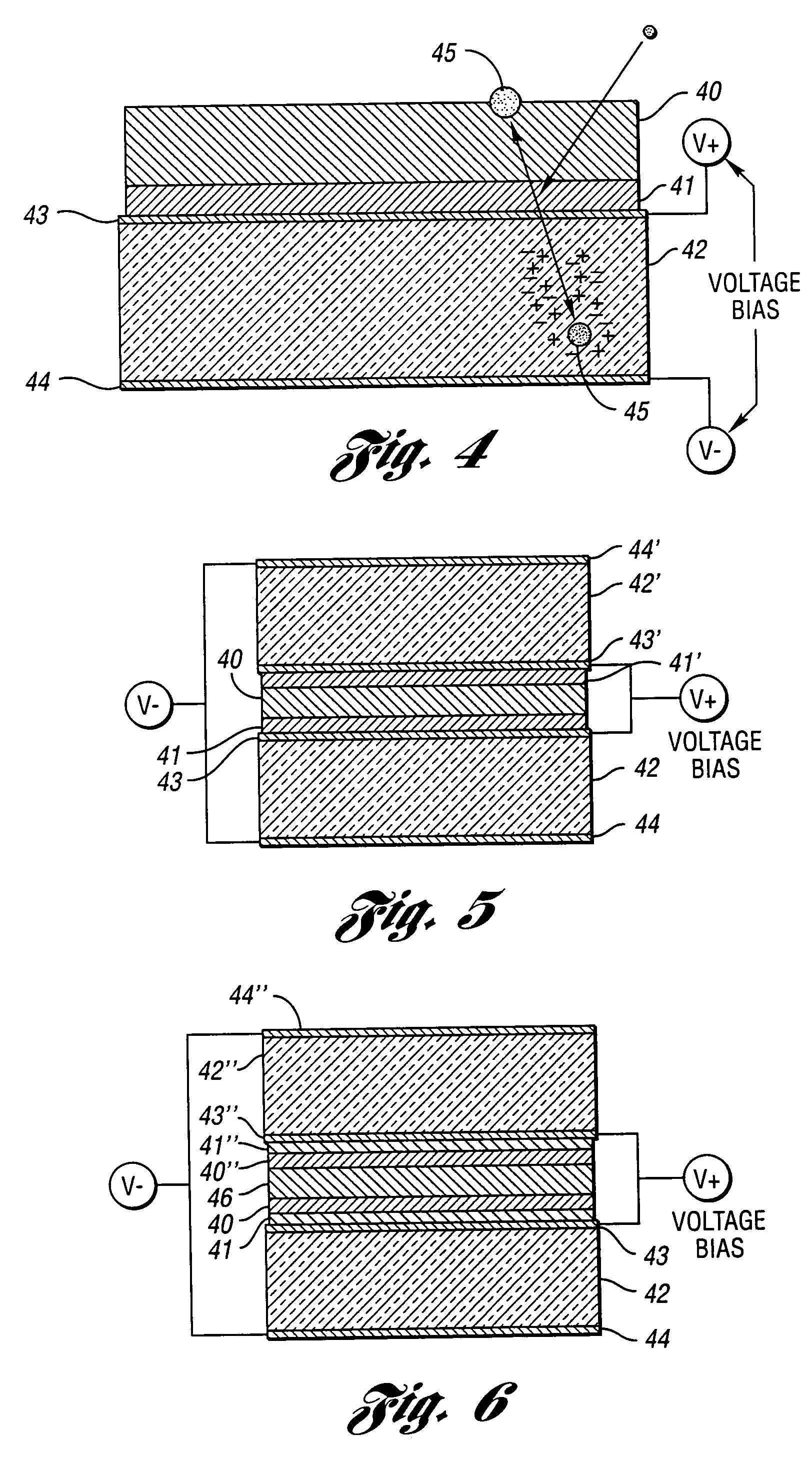High-efficiency neutron detectors and methods of making same
a neutron detector and high-efficiency technology, applied in the field of neutron detectors and methods of making same, can solve the problems of reducing the energy transfer to the semiconductor detector, gd-based films are less attractive for devices, and thermal neutron detection efficiency is limited to only 4%, so as to achieve compact and rugged, detect the effect of efficiency and thinness
- Summary
- Abstract
- Description
- Claims
- Application Information
AI Technical Summary
Benefits of technology
Problems solved by technology
Method used
Image
Examples
Embodiment Construction
Multi-Layered Films for Improved Efficiency
[0119]Referring now to FIG. 4, an embodiment of the invention is shown in which the simplistic prior art approach for the coating of a detector has been modified to incorporate multiple films 40 and 41. The neutron reactive films 40 and 41 may include, but are not limited to, various compounds and concentrations of boron, lithium, lithium fluoride, gadolinium and cadmium. Fissionable materials such as, but not limited to U235, Pu, Th are also applicable. The device can have two or more different neutron reactive films 40 and 41 placed upon the detector surface. The semiconductor material 42 may be composed of a variety of materials, including, but not limited to, silicon, silicon carbide, gallium arsenide, gallium nitride, indium phosphide, cadmium telluride, cadmium-zinc-telluride, gallium phosphide, mercuric iodide, lead iodide, and variations of these aforementioned semiconductors. The detector has conductive contacts 43 and 44, one cont...
PUM
 Login to View More
Login to View More Abstract
Description
Claims
Application Information
 Login to View More
Login to View More - R&D
- Intellectual Property
- Life Sciences
- Materials
- Tech Scout
- Unparalleled Data Quality
- Higher Quality Content
- 60% Fewer Hallucinations
Browse by: Latest US Patents, China's latest patents, Technical Efficacy Thesaurus, Application Domain, Technology Topic, Popular Technical Reports.
© 2025 PatSnap. All rights reserved.Legal|Privacy policy|Modern Slavery Act Transparency Statement|Sitemap|About US| Contact US: help@patsnap.com



